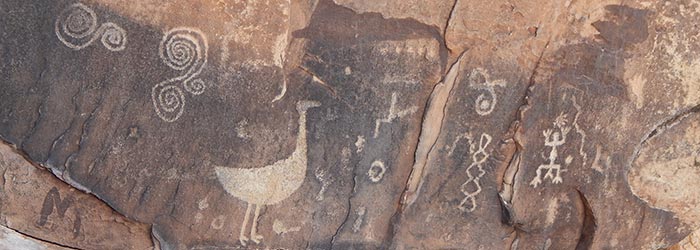
Petrified Forest is becoming known for the wide range of its archeological resources, too. Clovis/Folsom sites (<7000 B.C.E.) with some of the earliest artifacts found in North America have been found at the park. A variety of Archaic (7000 B.C.E.–1500 B.C.E.) artifacts, too.
While Basketmaker sites (1500 B.C.E.–750 B.C.E.) have been found in the pre-expansion park, the eastern expansion lands have been found to be rich with these sites that are known for their pithouse structures and pre-pottery or early pottery artifacts. There are early Basketmaker sites and late Basketmaker sites. There are also early and late Pueblo sites (750 B.C.E.–1600 C.E.), including some large ones of a hundred rooms or more, like Puerco Pueblo.
In addition to the range of dates that represent continuous human presence here since man first walked in North America, the range of pottery styles found at Petrified Forest archeological sites demonstrate that the area has been a transportation corridor for a long time. Styles from all over the southwest—more than would be expected from routine trading—tell us that a wide variety of cultures either traveled through the area or traded with the people who lived here.
Transportation routes in historic times from the Beale Camel Trail and the Santa Fe Railway to Route 66 and Interstate 40 attest to the ease of travel through the area. This high degree of cultural interchange may have played a role in the large number of rock art sites in the park, too. The fallen boulders below sandstone caps on the edges of the area’s mesas hold hundreds of rock art sites and thousands of individual petroglyphs. A few pictograph sites are known to exist, too. Newspaper Rock is the best known of these petroglyph sites.
We have also learned through seeds found in the bottom of a recently discovered pot that the Lithodendron Wash, and probably other watercourses, had riparian vegetation during the Pueblo period, meaning water was either flowing perennially or at least that the water table was much higher than it is now. That helps explain the high density of archeological sites.